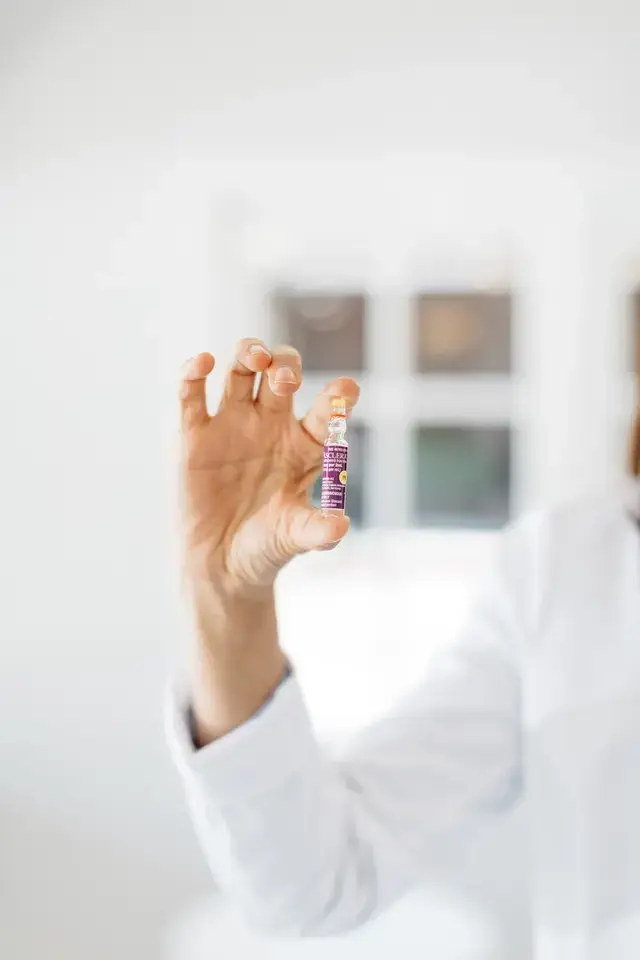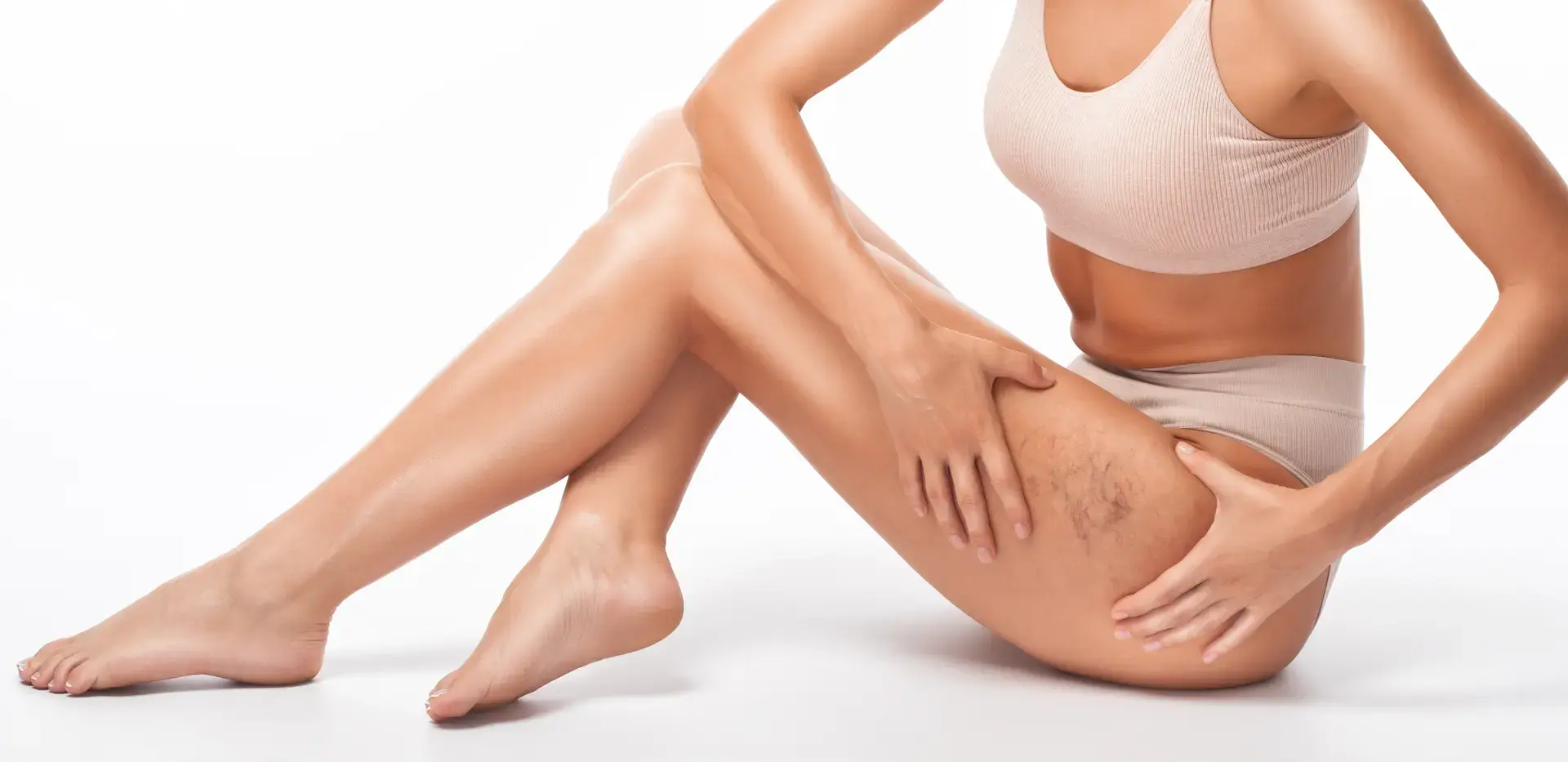Sclerotherapy
Sclerotherapy is a medical procedure used to treat varicose veins and spider veins. It involves injecting a solution directly into the affected veins, causing them to shrink and eventually disappear. This treatment is considered a safe and effective way to improve the appearance of varicose and spider veins.

Sclerotherapy
Sclerotherapy is a minimally invasive procedure used to treat varicose and spider veins. It involves injecting a solution, usually a salt solution, directly into the affected veins. This solution irritates the lining of the blood vessel, causing it to collapse and stick together. Over time, the vessel turns into scar tissue and fades away.
Sclerotherapy is typically performed in a medical office and does not require anesthesia. The procedure usually takes less than an hour, and patients can resume their normal activities immediately after.

Sclerotherapy Work?
During the procedure, Ellie Zarnegar, PA, will use a fine needle to inject the solution into the affected veins. The solution irritates the lining of the blood vessel, causing it to swell and stick together. This process is repeated for each vein being treated.
After the procedure, the doctor will apply compression to the treated area to help the veins stay closed. Patients may also be asked to wear compression stockings for a few days to help with healing and prevent blood clots.
Over time, the treated veins will fade and disappear, and blood flow will be redirected to healthier veins. The results of sclerotherapy are usually permanent, but new veins may develop over time, requiring additional treatments.
I avoid after Sclerotherapy?
After sclerotherapy, it is essential to follow your aftercare instructions to ensure proper healing and achieve the best results.
Here are some things to avoid after sclerotherapy:
Sun Exposure
Avoid direct sun exposure to the treated area for at least two weeks after the procedure. Sun exposure can cause hyperpigmentation or darkening of the skin, which can be permanent. If you must be in the sun, be sure to wear sunscreen with an SPF of 30 or higher and cover the treated area with clothing.
Strenuous Activities
Avoid strenuous activities, such as heavy lifting or high-impact exercises, for at least two weeks after the procedure. These activities can increase blood flow and put pressure on the treated veins, causing them to reopen.
Hot Baths and Saunas
Avoid hot baths, saunas, and hot tubs for at least two weeks after the procedure. The heat can cause the veins to reopen and may also increase the risk of infection.
Tight Clothing
Avoid wearing tight clothing, such as tight jeans or leggings, for at least two weeks after the procedure. Tight clothing can restrict blood flow and put pressure on the treated veins, causing them to reopen.
Smoking and Alcohol Consumption
Avoid smoking and alcohol consumption for at least two weeks after the procedure. Smoking and alcohol can interfere with the healing process and increase the risk of complications.

Asclera?
Aclera (Polidocanol) Injection is an FDA-approved prescription medication used to treat spider and reticular veins in the lower extremities. Asclera is injected into the affected veins, causing them to seal shut and be reabsorbed into the body. The affected veins then fade from view over time.

Risks and Side Effects
Serious medical complications from sclerotherapy for spider veins are extremely rare when performed by a qualified physician. Common side effects are usually temporary and well tolerated.
The most common side effects of Sclerotherapy include:
- Swelling, Redness, Tenderness, and itching (these tend to gradually disappear within hours to days).
- Some bruising, which gradually fades over the course of a few weeks in most cases.
- Retained dark blood.
- Brown pigmentation and matting (the appearance of blush like a microscopic network of fine red vessels).
- Small skin ulceration that would heal leaving a permanent scar. This should be a rare event in experienced hands and is minimized by a meticulous technique and use of the mildest solution that can achieve the desired results.
- Allergic reactions to the commonly used Sclerotherapy solutions (tends to be very rare).
If you experience any of these side effects, be sure to contact our office at 925.855.1773 for further instructions.
Sclerotherapy for Spider Veins?
The frequency of sclerotherapy treatments depends on the severity of your spider veins and your healthcare provider’s recommendation. The typical gold standard for sclerotherapy treatment for spider veins is 2 to 5 sessions, spaced approximately 6 to 8 weeks apart. This schedule allows for optimal results and ensures that all affected veins are adequately addressed.
for Sclerotherapy?
Sclerotherapy is a safe and effective treatment for most people with varicose and spider veins. However, it may not be suitable for those who are pregnant, have a history of blood clots, or have certain medical conditions.
Sclerotherapy is a safe and effective treatment for varicose and spider veins. It involves injecting a solution directly into the affected veins, causing them to shrink and eventually disappear. After the procedure, it is essential to follow all of your aftercare instructions to ensure proper healing and achieve the best results.
Book A Service, Today!
The gift card could be redeemed for Juvederm or any other treatment offered by Essential Aesthetics, including Botox, Dysport, Juvederm Voluma, Juvederm Volbella, Juvederm Vollure, Kybella, or CoolSculpting. Explore the financial options for your cosmetic treatment with us.
If you have any questions, we’ve got you covered in our FAQ sections about cosmetic treatments. We offer financing for aesthetic treatments in Danville.
Book your appointment to learn more about our cosmetic treatment in the East Bay Area, or call us at 925.855.1773 to book your private appointment at Essential Aesthetics. You can also book your private consultation for your aesthetic treatment.
